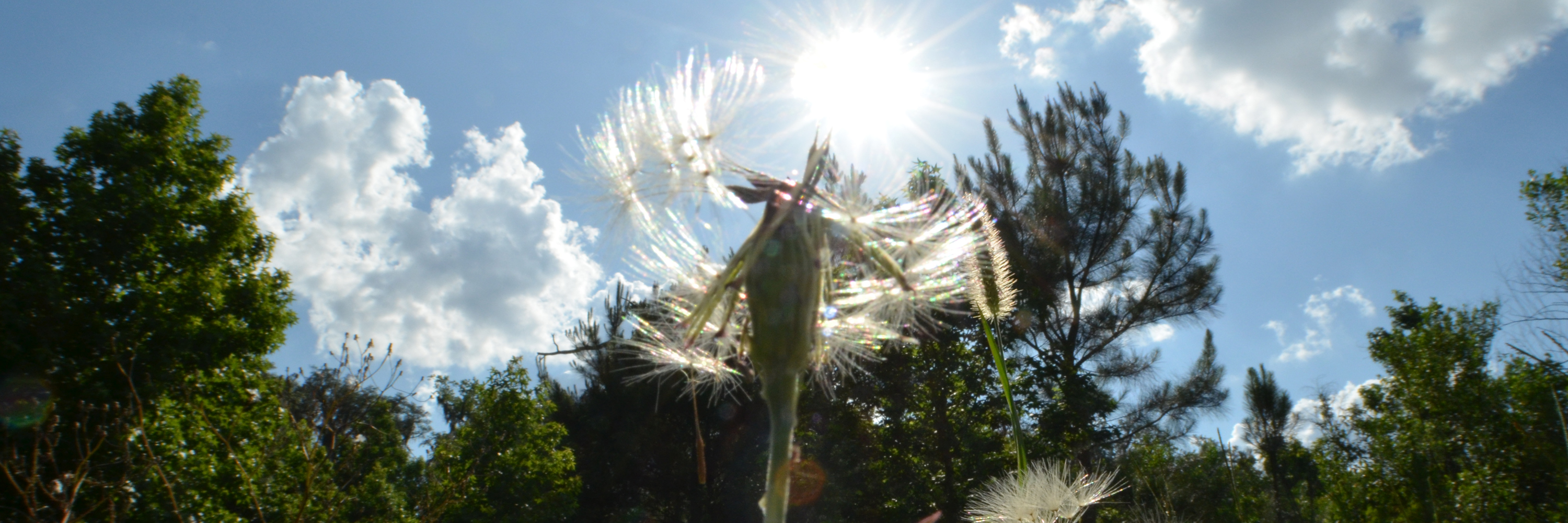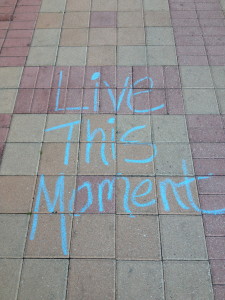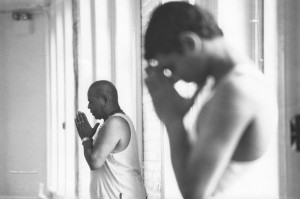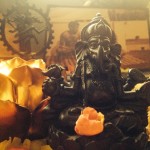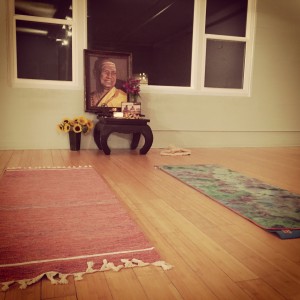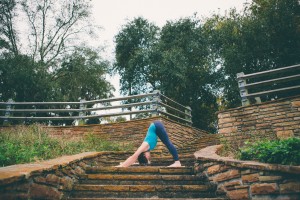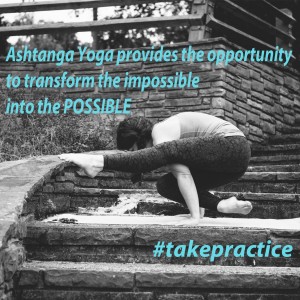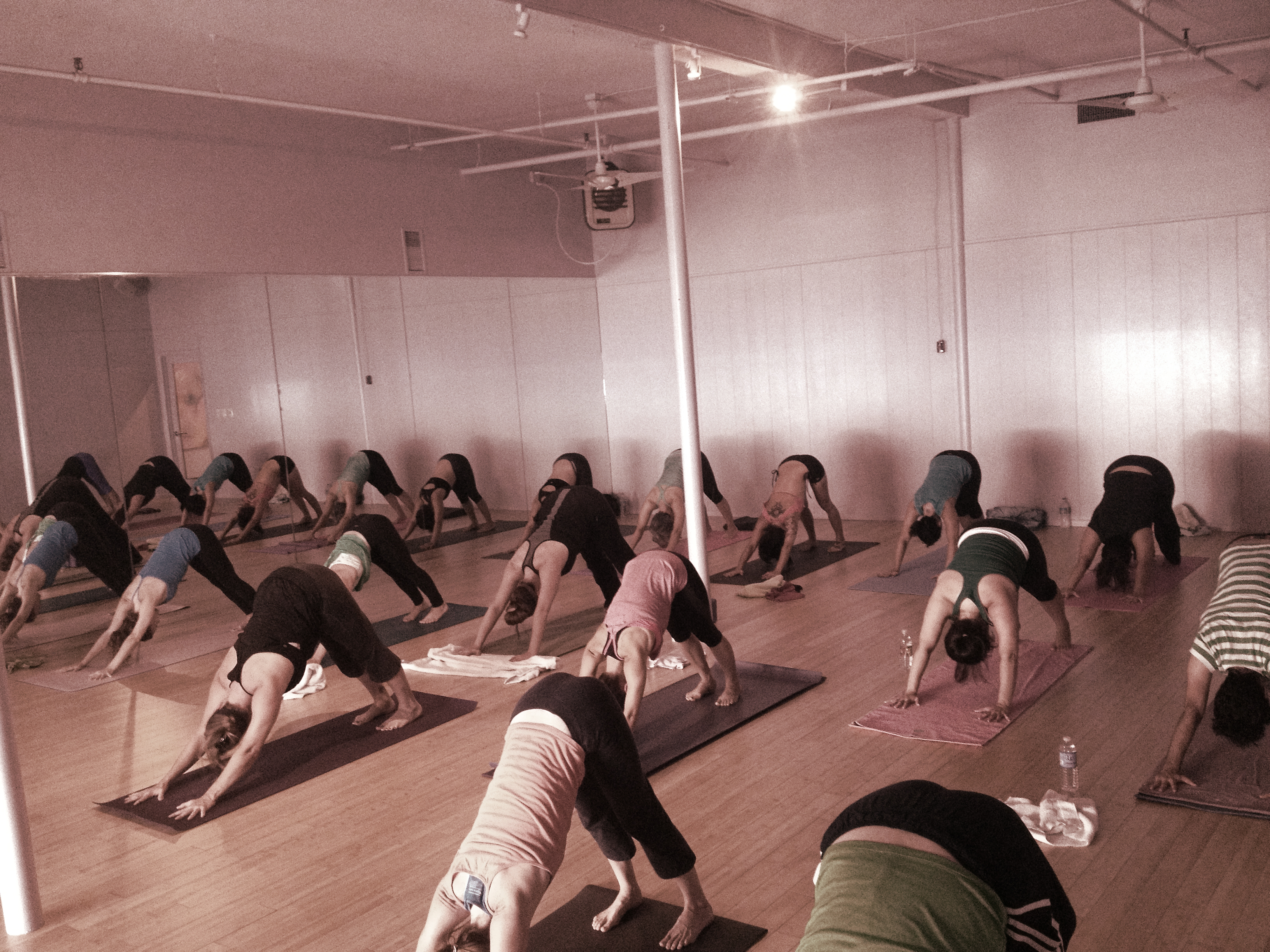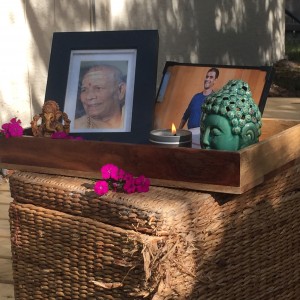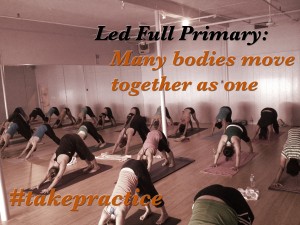Conference Notes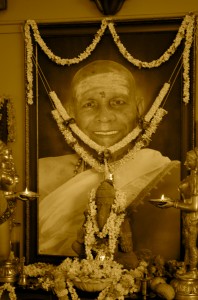
by: Sara Moncivais
Hatha Yoga Pradapika says “The water- the sweat that you get- through effort- don’t waste that sweat,” you try to rub it into your body so that the good minerals from the sweat will open the pores for more sweat and toxins to come out. It all will come outside.
Only when you put effort in will the sweat that comes inside—
Nowadays, you know, there is lots of yoga. Hot yoga, this yoga, that yoga—as soon as you step inside the room you start sweating. We are not talking about sweat like that, that is just artificial sweat because of the humidty the room has. So everyone who goes there says, “Oh! I sweat so much!” There are so many things that are not good in that kind of room. Why we always say don’t close those windows, don’t close too many windows? The air should come inside. Especially when so many people are practicing, you need some fresh air inside. If we don’t open the bad air won’t cycle out. It will keep cycling here. So your exhalations are someone else’s inhalations. So you are exchanging breath. You exhale and she inhale.
Air should come, especially when so many people are practicing. A little bit opening should be there so that the fresh air is coming inside. A mantra says, “Many different states of yoga they teach you asana, make you stay in asana for long time—trikonasana you will be stuck like this—you are not moving anywhere. When we were children we used to play statue game—have you played this? Someone would get in one posture, oh, statue, he has to stay there. So this vinyasa we do generates so much heat inside, heat means the energy, which is in the form of internal heat we say. So that once we generate that, all the toxins will come out through the sweat and through exhalation. Many times many people don’t like to put mat, they like to do on the floor. The floor also you shouldn’t do. Asana means a platform also, a place where you sit is also called asana, so once you sit or when you’re doing asana you shouldn’t do it on the floor. There should be some carpet or some mat because whatever energy you generate will drain. The earth will take all those energy.
In Brahamin ritual you will see that no one does any prayer on the floor directly, be sure to put something in between. So that the energy will stay within you. Exactly like that, when you do it outside in the open air. I’ve seen many workshops, they do open air. That as well you shouldn’t do. Why? Again, there is wind outside. The wind will take all your energy. Whatever energy you have generated the wind will take all your energy. So it is very important where you do, what you do and how you do it.
So this is all, oh and yogis frequently traveling. Now there are frequently traveling yogis—travelingyogis.com—but yogis they have to stay in one place, they shouldn’t move too much. A certain place where you practice, that place will generate good energy by doing it every day. Not only will you generate good energy within you, you will also generate good energy in that place around you. One place always doing, oh I’m bored with this place!—you can’t change. This is all, oh, don’t start fighting from next week! “Oh, this is my place!” Don’t push out of the way.
For everything there is a karma, we say, karma means systematically you have to do. Once we generate those energy and once all this sweat is coming through that energy and working out- just doing primary series is lots of hard work—you’re all doing hard work. So that through that hard work sweat comes. Don’t waste that sweat, try to rub it back to your skin. It’s not massage, just rubbing, that’s all. The body becomes strong. Strong means you can go and lift Chamundi Hill. It becomes sturdy and stable and the organs will become healthier. And body becomes very light. If you see for many years of practice you lose weight. Your body will become lighter—when you practice for many years. When you are starting your body feels so heavy because your body is not flexible, your muscles are not flexible. Everything feels so tight. Some body builders you see, they can’t even move. Because there is no flexibility, yoga brings—the asana expecially—bring this flexibility. Why you need this flexibility?
Student: To take the hardships of life.
Sharath: You get flexibility there will also be lots of hard.
Why you need flexibility, stability? Why? So, the more flexibile you are, that doesn’t mean you are big yogi, that is another thing. Why do we do so many asanas to bring stability? So we can sit still in one place. If you ask a body builder and ask him to put padmasana, first of all he can’t put padmasana but he can’t sit still! He can’t sit with crossed legs, he’ll want to remove it.
And to bring calmness within us. To bring a calmer mind, a calmer body. How to relax our body, relax our mind. So that is why we have to do asanas more. That is the reason for doing asana, it is not for showing off, “Oh, I can do this asana.” The more asana you do, the mare familiar you get with the asana. Especially when you get new asana, you get more familiar everyday. Each time you do you get more familiar with that and you get more comfortable with the asana. So that is what first effortlessly we do, when you do asana first easily then there is no effort. If there is no effort in an asana your mind also will become very calm. Is it not true? So once you are sitting in padmasana and nothing is hurting you in padmasana, then automatically your mind becomes very calm. Everything within becomes very calm. You get absorbed within you. Have you felt that in your asana. Sometimes when you go deeper, deeper means when you go deep within your asana you totally get absorbed within that asana. Everything becomes still there. You go and watch a movie you get so involved in the movie, you feel you are in the movie. Nowadays there are good theatres now, IMAX, you go IMAX they make you fall from the sky. You start moving—you get so involved with that movie you feel that you are in that movie and forget everything else. You forget what you are, who you are, where you came from. You are watching only for three hours. Is it not true? You go to a movie you get so involved. So this asana is, and you need to have like love towards that also. You totally get absorbed in that asana, then all the nonsense around you will stop.
I realized this in 1997. Until then I didn’t realize this. I had to do a demo in Australia. With hundreds of people watching. Then I realized the power of asana. Totally when you involve yourself in the asana, it doesn’t matter. 100 people are watching or 100,000 people are watching you, it doesn’t matter. Dhyana is happening inside there. So for that, it is very important that you do it everyday. Generate that energy within you. Generate that focus within you, generate that concentration within you so these kind of realizations can happen through that.
If you have any questions.
Q: What about practicing asana in sacred spaces, like temples? Is that OK? No.
S: Where is your energy? It’s good to take videos. When you take video, if you take here (gestures to shala) you can’t impress many people. Do Natarajasana over here (points to moldy corner).
Temple is here, within you. Try to realize this temple which is within you. That is what yoga means. To realize this temple within you. The inner atma, what we say, this is not different from the Supreme soul. Everything is one. You think, you go to the temple, you think, “I’m very spiritual, I go to the temple,” but in your mind there is lots of delusions going on, “how can I cheat this guy, beat this guy—this guy is going further—how can I beat him?” So many thoughts, which there is no point in going to the temple if you really don’t want, if something is not calling you to go into the church. I’ve seen so many children going and crying going to the temple. Crying because they have been forced to go to the temple. That’s the good thing in yoga in India—Indians can get yoga very well—why? Because, from the childhood in our house especially they never took to temple because temple was in my house. The priest was in my house. My grandfather generated that, he always used to do japa in my home. Never used to go there. The temple was within him. First we have to correct here, then there will be a meaning to go to the temple. If you don’t correct here and then go to the temple whatever you do, it’s nonsense. Just in front of the idol you say, some difficulty comes in your life and then you will run to the temple. “Oh God, save me from this difficulty and I’ll put food for one hundred people,” once everything is alright they will forget. I mean, not you, I’m talking generally. It’s human nature like that. Only when we have difficulty we go to the temple, to the god, and ask him to help.
She asked one question and I… create your own temple. Actually in temple you are not supposed to show your leg to the god. In Indian temple when you are doing so many asanas you are not supposed to show your feet to the god. You’re not supposed to show your back to the god.
Q: What do you suggest to people who have a teacher that travels a lot? Or that they have to travel to their teacher and teacher might not be there?
S: Then he is not a good teacher. Teacher should have dedication, stay in one place, TEACH, then he becomes a good teacher. If I keep traveling everywhere all the time, where is your pilgimage? Nowhere. You have to come somewhere. I’m sleeping only four hours to teach you all yoga. To teach you the system which has come from thousands of years, so if your teacher always traveling then he is not a good teacher, he can’t generate a good environment, he can’t build up—establish something. This the meaning of temple also, this can be a temple. The yoga temple, they say. Because everyday we all come here, we generate good energy here. I think you all come with good heart, with good energy, with good intention. This is the temple. If I keep traveling I can’t build temples many places. I travel to bring them here. For six months you come here. Authorization is given here, they have to put the effort to come and learn here. Come to the source, learn, realize, experience.
Q: Will you be teaching here next season? We are worried.
S: That I don’t know. You can’t predict yogis. Sometimes self Sadhana is also very important. You know what I mean? Self-study is also very important. When there is always giving there is no time to…I’m a student, also a yoga student. I’m a little senior than you—much more senior than you—but still I am a student. What student has to do? Student always has to study, learn. Try to get more knowledge. Himalaya I am teaching next year. One week. I can’t go to Himalayas because I have two children. Two children and a wife. Family dharma.
According to Indian philosophy there are four to five different stages in your life. Until teenager brahmacharya, means celibacy, then you get married and become grihastha, that’s the family man/woman who raise a family, then comes, after settling your children into life—that means they earn their own money and have their own family—then you go to vanaprastha, that is when vhairaghya, means non-attachment, when you slowly detach everything you give everything to your children. Then in the last stage, sanyasa, you leave everything, you put attention towards the divine more and try to slowly get totally detached from everything. This is the four stages, some say five stages, your childhood is one stage. Each stage should be accepted, “OH I don’t want to get old! I want to be young!!” You practice yoga, you will be younger than others, but one day the cycle has to go. The cycle nobody can stop. Some people are scared, “Oh I get old I die,” you have to. Nobody knows where we go when we die. These are the North and South pole you can say, the North pole you take birth and South pole you die, in between this—the journey between—what you do that matters. What work you do. That will stay forever. If you become so violent and do everything, people will be scolding you every generation. Oh there was one guy who killed so many people, these crazy people, everyone will start scolding, but if there is one Ghandi. Ghandi brought peace to the world. He didn’t bring freedom to the country he brought peace to the world. Through ahimsa, you can do miracles. He got independence not through fighting, through peace he brought freedom. He will be remembered, for I don’t know how many generations, for good things he will be remembered. I think there is no big yogi in modern yoga, he’s the biggest yogi we’ve ever seen, ghandi. I know you’re all doing asanas everyday, but what is the purpose of doing that, that is very important. The transformation should happen within you, it should change you, put more knowledge in you to understand this life. Then the purpose will be served, asana. Otherwise it will be same. It’s like going to work. Have you seen in New York, everyday they are walking to the office. Next day same guy is walking and he goes, (imitates being at computer) his life is not beyond that. There is no life beyond that, never goes to nature or to forest or experience anything else. Only thing is money- it is important, but you shouldn’t get attached to that.
I had one friend like this—but he’s a nice guy—very rich, business, business. I took him to the forest, to Africa, there was lion next to him, he was so afraid. Three of them, there was lion next to me and he was advising me, “Come this side! It will come and catch you!!” I said, “No, nothing will happen,” it was just laying here in the safari. It was very calm, he was looking at me, very calm.
Once we went to Africa with Gurujji and it was same thing, there were five lions sleeping here. He was very calm. Shraddha was young, “Oh great-grandfather, come this side, lion will catch you!” He say, “Oh nothing will happen.”
If you are peacefully sitting everything becomes peaceful. If you become violent than everything becomes violent. Why do people become violent? Because you are violent. Otherwise everything will be calm. If everyone stays calm, there will be no conflicts at all. Everything will be going smoothly. This calmness has to come in everyone. Getting attached to too many things can also be difficult.
The state of equal—to maintain that is called yoga also. All this equally accepting is called yoga. Sukha Dukha, two extremes of life. One is happiness one is sorrow. One is the good things of life. You don’t want the bad things but want the good things, is impossible. You should accept both the things equally. Every New Years, what we do, we bring neem leaf and bring jaggery and we mix both and we give to everyone. So that in this year, at least, whatever comes we should accept it equally. Neem is so bitter, jaggery so sweet. Life is always. I advise my student, yoga is like four wheel drive. Land Rover. It has terrain management. I like cars so much! There are three, four, five different modes. There is one to go down the hill, it manages and adjusts everything so that it doesn’t slip. For off roading there is one, for smooth road there is one. Yoga is also like that. It doesn’t have dial to move, but automatically it will move. Terrain management is within you!
Has anyone gone to Africa. Africa is poorest, I think, country. In remote places people don’t have clothes to wear, but they have so much joy within them! Went to some small place and they have small, small huts, but they have so much joy within them! They don’t have anything, but they have joy.
Whenever you feel stressed out, sing a Bollywood song. That’s what I do at home. When my wife and I fight I just sing songs. Bollywood song. (I kid you not, he starts to sing. I kid you not again, people cry).
Such a good meaning in there. There is always, we feel our life is finished, but there is always things new. New things to know, new things to realize, new things to know. All the time there is something that beats within you, heartbeats that will bring more life to yourself. You think you are dead, but you are still alive. So many things to know. I can’t say I know everything.
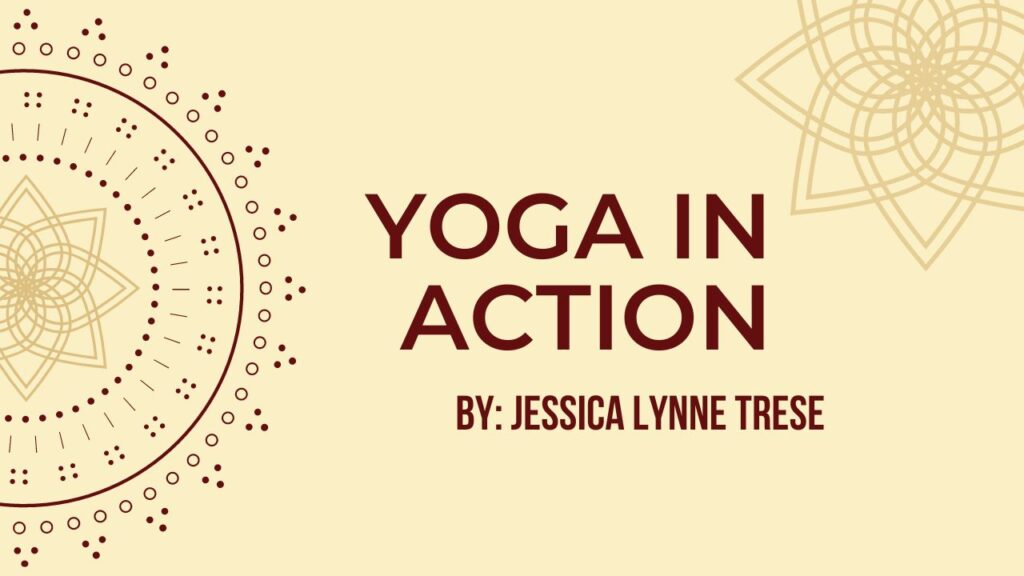
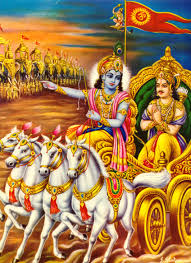
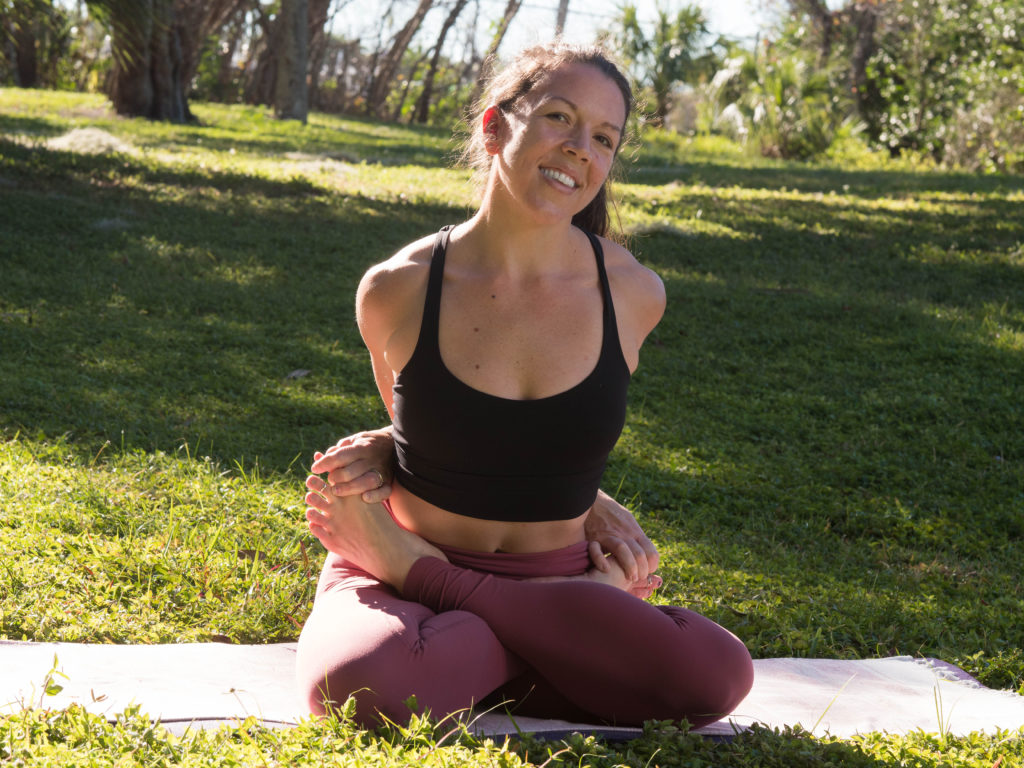
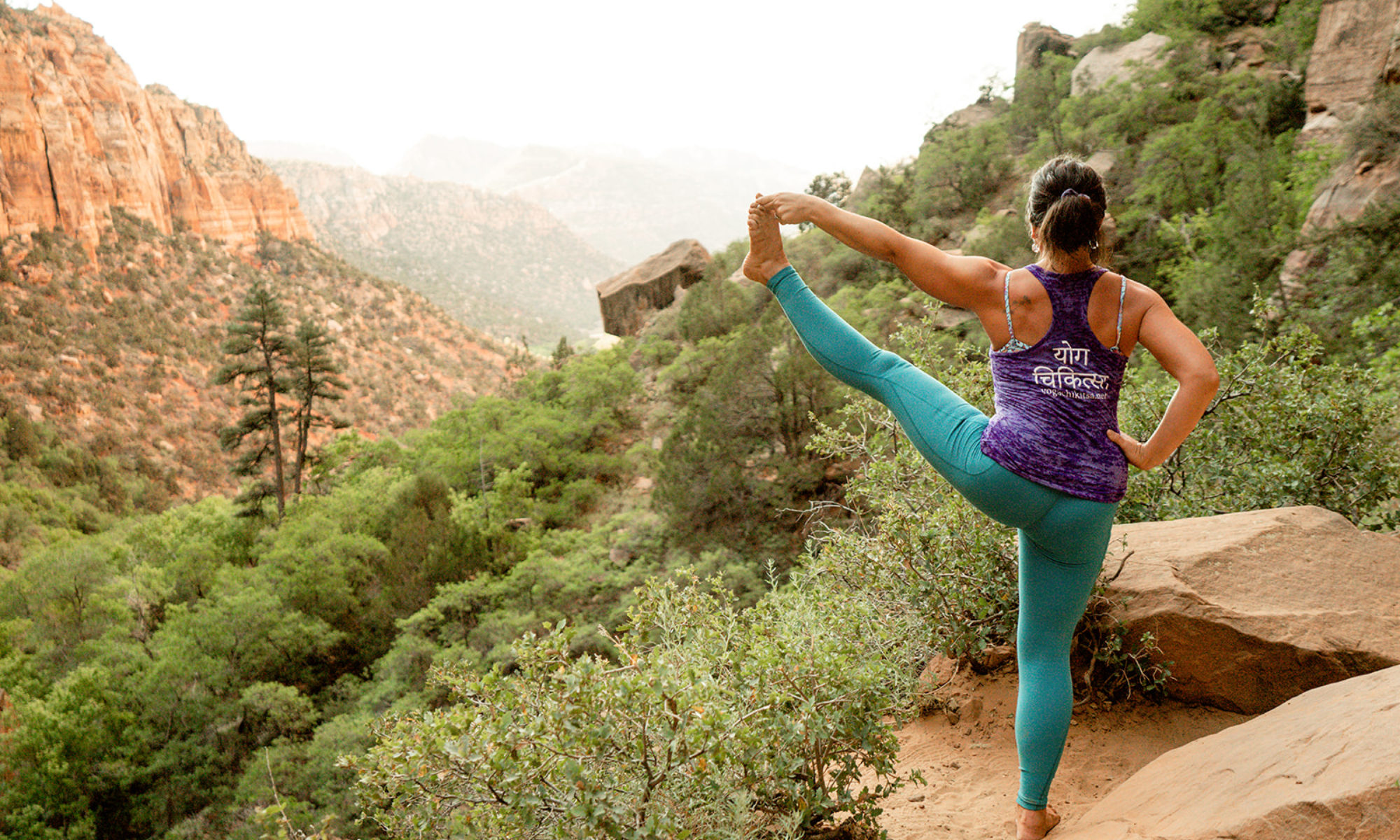
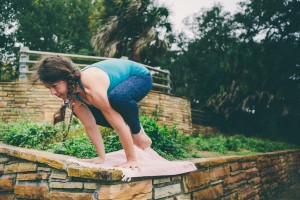

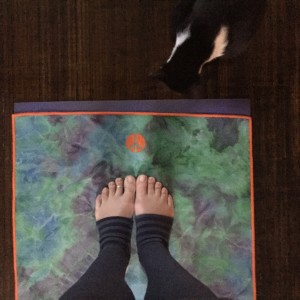
 It is recommended that women rest from their Ashtanga practice during the first trimester of pregnancy. This is a very delicate time in the gestational process and most women are guided to let their bodies lead the process without adding a strong practice to the mix. For me, this hiatus began with standard first trimester rest, and then some complications led me from voluntary rest to limited activity as ordered by my Doctor. We also had a few more bumps in the road which kept me away from my mat for another month.
It is recommended that women rest from their Ashtanga practice during the first trimester of pregnancy. This is a very delicate time in the gestational process and most women are guided to let their bodies lead the process without adding a strong practice to the mix. For me, this hiatus began with standard first trimester rest, and then some complications led me from voluntary rest to limited activity as ordered by my Doctor. We also had a few more bumps in the road which kept me away from my mat for another month. I know I will never ‘get back to where I was,’ because that moment has passed and this moment is an entirely new experience. And I also know I will once again find ease and grace on my mat, a brand new and also familiar experience in each fresh moment, and in each familiar pose. I will once again grab my heels in kapotasana, and find lightness as I drop back, it will come.
I know I will never ‘get back to where I was,’ because that moment has passed and this moment is an entirely new experience. And I also know I will once again find ease and grace on my mat, a brand new and also familiar experience in each fresh moment, and in each familiar pose. I will once again grab my heels in kapotasana, and find lightness as I drop back, it will come. 

